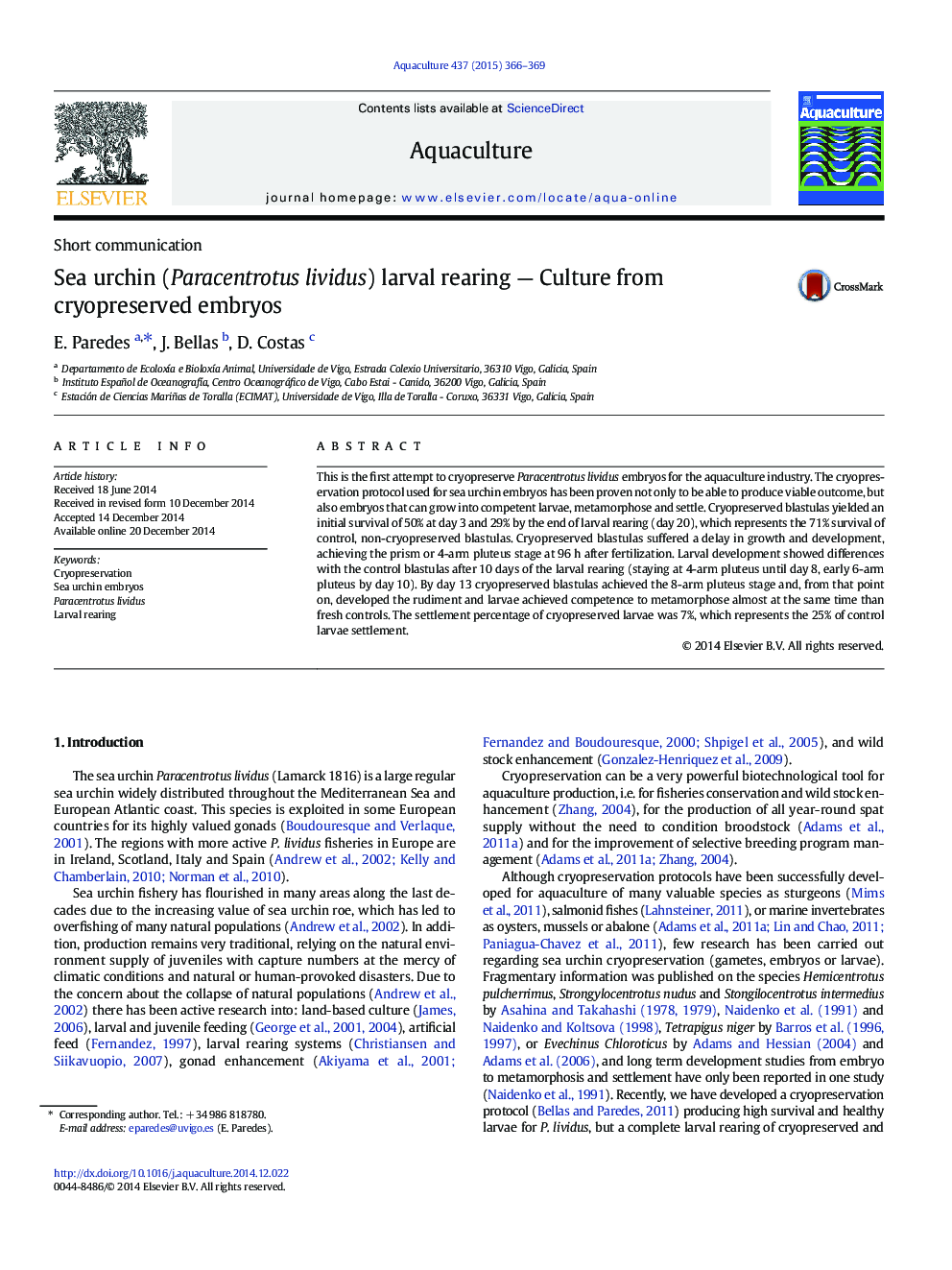| Article ID | Journal | Published Year | Pages | File Type |
|---|---|---|---|---|
| 8494760 | Aquaculture | 2015 | 4 Pages |
Abstract
This is the first attempt to cryopreserve Paracentrotus lividus embryos for the aquaculture industry. The cryopreservation protocol used for sea urchin embryos has been proven not only to be able to produce viable outcome, but also embryos that can grow into competent larvae, metamorphose and settle. Cryopreserved blastulas yielded an initial survival of 50% at day 3 and 29% by the end of larval rearing (day 20), which represents the 71% survival of control, non-cryopreserved blastulas. Cryopreserved blastulas suffered a delay in growth and development, achieving the prism or 4-arm pluteus stage at 96Â h after fertilization. Larval development showed differences with the control blastulas after 10Â days of the larval rearing (staying at 4-arm pluteus until day 8, early 6-arm pluteus by day 10). By day 13 cryopreserved blastulas achieved the 8-arm pluteus stage and, from that point on, developed the rudiment and larvae achieved competence to metamorphose almost at the same time than fresh controls. The settlement percentage of cryopreserved larvae was 7%, which represents the 25% of control larvae settlement.
Related Topics
Life Sciences
Agricultural and Biological Sciences
Aquatic Science
Authors
E. Paredes, J. Bellas, D. Costas,
